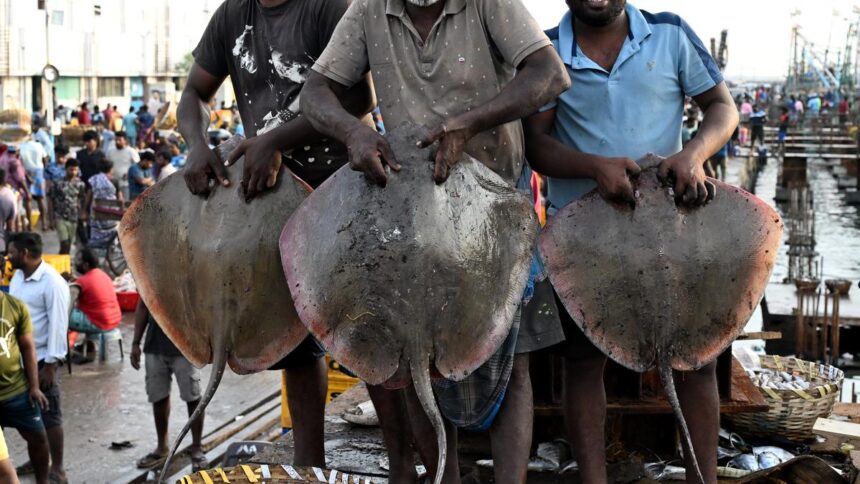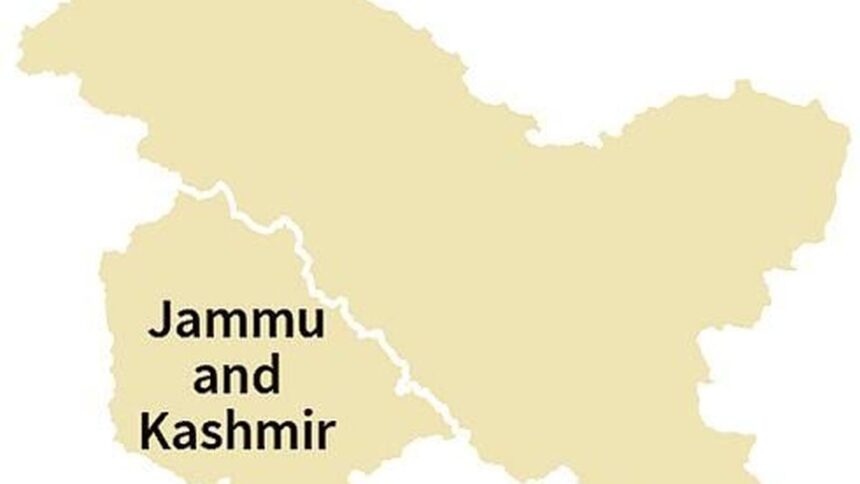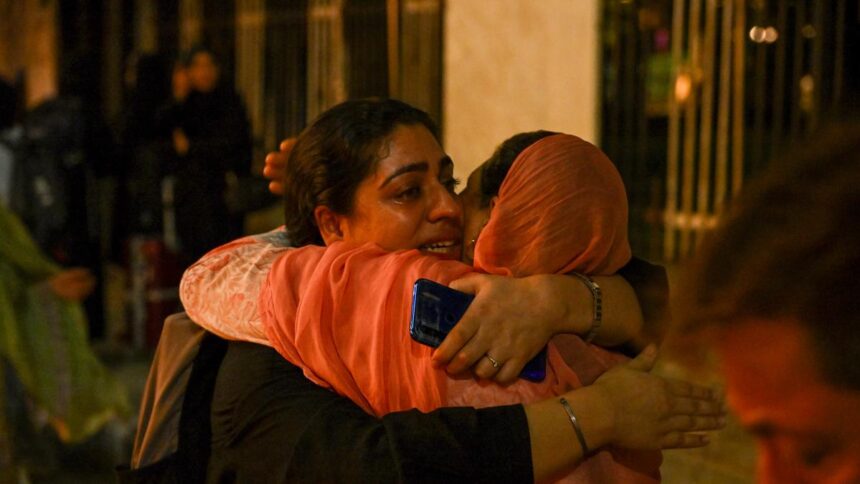In villages across the lush Godavari delta, coconut trees are more than just a crop; they are sacred and their cultivation, the linchpin of rural economies. Towering over groves, backyards, country roads and canal banks, the coconut tree is a pillar of rural livelihood in the region. From farmers and traders to coir makers and oil extractors, it supports hundreds of thousands of people across at least 15 occupations.
In Central Godavari Delta, known as ‘Konaseema’, coconut tree are grown on over 54,000 hectares. A 2022 report by the Coconut Development Board shows that India’s highest coconut yield of 15,964 fruits a hectare was reported in here in Andhra Pradesh.
But at nine villages dotting Malkipuram and Maamidikuduru mandals of Dr. B. R. Ambedkar Konaseema district, the all-important trees are dying by the thousands. The reason: a large natural drain, once revered by villagers as a lifeline, is now flooding coconut groves with saline water, killing the trees and turning the rich delta soil barren.
A man-made disaster
Shankaraguptam drain at Shankaraguptam village in Dr. B.R.Ambedkar Konaseema district.
| Photo Credit:
T. Appala Naidu
Originating in Sakhinetiapalli mandal, the 22.7-km Shankaraguptam freshwater drain snakes through Malkipuram mandal before meeting Vynateya branch of the Godavari river at Karavaka in Maamidikuduru mandal of the district. It is fed by numerous stormwater drains and the excess water let out from agricultural fields.
Over the years, coconut farmers in villages along the drain dug channels to irrigating their groves. The arrangement worked well for them until 2017, when it was dredged for 8.5 km till Kesanapalli from the point of its confluence with the river branch. The canal had been dredged for 6.3 km from its origin by 2013, leaving a 7.9-km section untouched between these two portions. This upset the drain’s natural flow, causing the saline backwaters of its the confluence point with Vynateya branch to ingress deep into the drain.
The dredging was part of a routine exercise by the Godavari Delta System wing of the Water Resources Department to desilt the drain, but one that was left incomplete.

“By 2019, the drain’s water had become saline, and within six years, coconut groves spread over 500 acres have died in Kesanapalli panchayat alone. That’s nearly 5,000 trees grown by 150 farmers.”Yenumala NaguFarmer and sarpanch of Kesanapalli panchayat
“By 2019, the drain’s water had become saline, and within six years, coconut groves spread over 500 acres have died in Kesanapalli panchayat alone. That’s nearly 5,000 trees grown by 150 farmers, says Yenumala Nagu, the sarpanch of Kesanapalli panchayat, which has a population of 4,600. Nagu’s own six-acre coconut grove, which his late father had grown with 600 saplings in the early 1990s, has perished. “I have a coconut nursery on 2.5 acres, but the saplings have become stunted,” he says.
According to the Coconut Development Board, all these groves were between 30-40 years old and high yielding, with an annual yield of 220 fruits a tree. The normal lifespan of the tall variety of coconut tree is said to be around 80 years.
The house of a coconut farmer.
| Photo Credit:
T. Appala Naidu
The other eight villages hit by the phenomenon are Sankaraguptam, Padamaatpalem, Tooruppalem Gollapalem, Katrenipadu Lanka, Gudapalli, G. Pallipalem and G. Gubbalapalem in the mandals of Malkipuram and Sakhinetipalli and Maamidikuduru. The entire economies of these villages are driven by agriculture, with coconut being the most important crop.
Retired IAS officer and Razole Jana Sena Party MLA Deva Vara Prasad says an estimated one lakh coconut trees have died along the Sankaraguptam drain over the past six years. “Stagnation of the drain water in nearby fields has affected paddy cultivation as well, with acreage shrinking from 14,000 to barely 3,400 in Razole assembly constituency [over the same period].”
Moreover, the affected paddy field cannot be used for growing any other crop, save for brackish water aquaculture. But the only recommended species for the area — L. Vennamei shrimp — is infected by the ‘White Spot’ disease in Godavari and Krishna regions, according to 2015 reports by the Central Institute of Brackishwater Aquaculture (CIBA).
From fertile to barren
At Gollapalem panchayat, barely three kilometres from the drain’s confluence with the river, D. Srinivas, owns a 40-year-old coconut grove on 2.5 acres, which is his inheritance. “All the trees on two acres have perished. The remaining 70 trees are also sick and may not survive,” says the 35-year-old.
Srinivas now makes a living as a trader, procuring coconuts from surrounding areas and selling them to clients across the State. He is, however, just one of the 150 small farmers who have lost their groves to the canal’s saline water.
The phenomenon came to light in 2019 when farmers began to notice the untimely death of their trees. Subsequently, the Horticulture Research Institute (ICAR-HRS) at Ambajipeta and the district administration were alerted.
In 2022, an eight-member inter-departmental team of experts, including those from HRS-Ambajipeta, A.P. Pollution Control Board and Groundwater Department, launched an investigation into the matter. It was led by the Minor Irrigation Wing of Water Resources Department, Kakinada.
Soil and water tests revealed a high concentration of chlorides, fluorides and sulphates in samples collected from the affected groves. “Hence, backwaters with a high salt concentration were found to be the cause of death of the coconut palms,” concluded the team, which comprised experts in soil science, plant pathology, entomology, groundwater and environment. The team later submitted a report to the Agriculture Department.
In 2023, another investigation was launched by Dr. Y.S.R. Horticulture University. Led by Director of Research L. Naram Naidu, the university team studied the phenomenon on 45 acres of coconut groves. Their report, submitted to the Coconut Development Board, reads: “The backwaters of Shankaraguptam drain have been entering and stagnating in the coconut plantations subsequent to the dredging operations. The coconut plantations are waterlogged for over a week every month. The backwater ingression is causing a high salt concentration [in the soil].”
Salt water stagnated at a coconut grove in Kesanapalli village.
| Photo Credit:
T. Appala Naidu
The report added that the saline water was also stunting the trees’ growth. Notably, both investigations suggested dredging of the remaining portion of the drain as a solution. They reasoned that the process would restore the natural flow of the drain and prevent backwater ingression.
Early mitigation efforts falls through
In 2019 itself, the Dowleswaram Irrigation Circle authorities had submitted a proposal to the then government to complete dredging, but it fell through. “We recently submitted a fresh proposal with a cost estimation of ₹10 crore to dredge the pending distance. It is under scrutiny for financial clearance,” says Nagarjuna, Razole Drainage Sub-Division Deputy Executive Engineer (Dowleswaram Irrigation System).

“We recently submitted a fresh proposal with a cost estimation of ₹10 crore to dredge the pending distance. It is under scrutiny for financial clearance.”NagarjunaDeputy Executive Engineer of Razole Drainage Sub-Division (Dowleswaram Irrigation System)
However, when a group of coconut farmers from the Central Godavari Delta met Minister for Water Resources Nimmala Rama Naidu on August 10 to seek his intervention in this regard, the Minister cited a lack of funds to speed up the dredging, says one of the farmers on the condition of anonymity.
Cornerstone of life and culture
The coconut grove featured in the film Chanti, at Shankaraguptam village in Malkipuram mandal of Dr. B.R.Ambedkar Konaseema district.
| Photo Credit:
T. Appala Naidu
It was in Shankaraguptam village, nearly six kilometres from the drain’s confluence, that the award-winning movie Chanti (Telugu) was shot in 1992. The Venkatesh-Meena starrer captures the lush green coconut groves along the canal. The coconut grove seen in the film, however, has now perished, apparently because of the saline water problem. Adjacent to this grove are many old houses, relics of a once prosperous era.
A coconut peeler at work on the banks of Shankaraguptnam drain in Dr.B.R.Ambedkar Konaseema district.
| Photo Credit:
T. Appala Naidu
Coconut cultivation and processing, however, continue to support a large number of people in the delta. The occupations include climber, trader, peeler, grader, porter, copra trader, husk processor, coir maker and oil extractor. A large number of these workers are women. The fruit is central to a number of customs and rituals of the villagers as well.
Srinivas says he recently procured 10,000 coconuts from villages in Malkipuram and Sakhinetipalli mandals. “Not even one was suitable for use in our traditional weddings,” he adds. It is customary in the Godavari Delta for the bride to turn up for the wedding with a spotless green coconut in her hands as a mark of prosperity in married life.
“Now, wedding photographers paint the coconuts green as it is difficult to find a well-developed coconut, says Anji, a coconut grove owner who has now resorted to aquaculture in Malkipuram mandal.
Salt on the wound
Groundwater in all the nine villagers has also become salty. “We won’t drink the water from hand pumps,” says Achanta Satyanarayana, a coconut peeler. Most of them now purchase purified water, a heavy drain on their modest incomes.
MLA Deva Vara Prasad says a 350-km pipeline is being laid to supply safe drinking water to 60,000 households in Razole assembly constituency by 2027.
Looking at a dead coconut tree, Kesanapalli Sarpanch Nagu says: “Surface water is killing coconut trees and groundwater is not potable. Within a few years, my village will be empty as we may have to leave the place.”




















